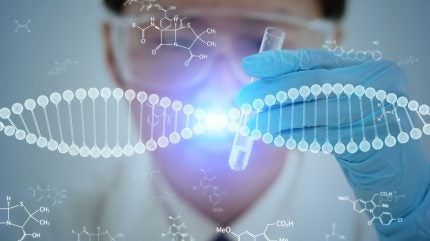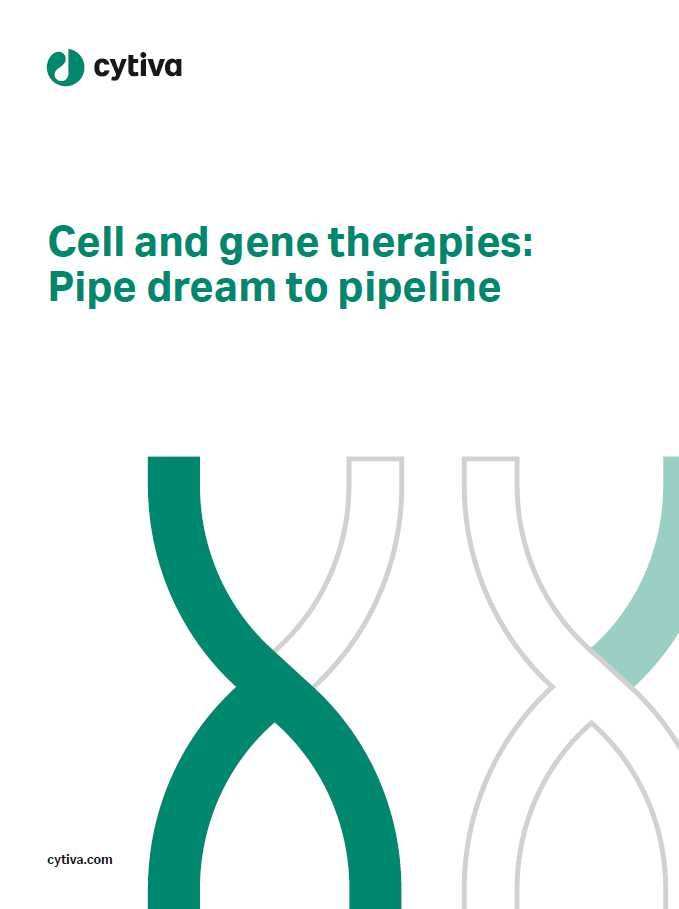

Easily one of the quickest developing spaces in the pharma space right now, cell and gene therapies are becoming increasingly investigated in a variety of indications.
The year 2024 started with a cell and gene bang, with the first CRISPR-based gene therapy Casgevy receiving the seal of approval from the US Food and Drug Administration (FDA). On August 8, the National Health Service in the UK announced it will be providing the therapy to sickle cell disease patients.
Despite being some of the most advanced medicines on the planet, a great number of these medicines are developed and manufactured using pen and paper. There are also several autonomous advances which have been taken on in other industries, but not in pharmaceutical manufacturing.
The industry has a long way to go, and as more contract development and manufacturing organisations (CDMOs) are adopting cell and gene therapy development and manufacturing, they will need to recognise the current issues and find ways to overcome them.
So how will the cell and gene manufacturing development space look a decade from now?
Cheaper and more efficient
One of the biggest challenges for cell and gene therapy production is increasing yield while decreasing cost. With some gene therapies costing upwards of $4million a dose, this will be a vital step for manufacturers to ensure these therapies can be more affordable.
Picking a CDMO which can assist in both these areas will be a big consideration for all sponsors and biotech’s in the space says David Smith, vice president of BioCentriq, a New Jersey-based CDMO.
“It is instrumental for the success of the industry to get the cost down. I do think we need to understand the biology more, we need a lot more runs of data throughout the world to be able to get there. Then we should start seeing the cost of manufacturing tumbling down,” explains Smith.

Big industry players will be crucial to this step and Smith says that automation and standardisation will be key in making this advancement, but at a cost.
By standardising and automating some of the processes, this will decrease the time for manufacture per batch which will be a big money saver says John Hadden II, CEO of London-based CDMO ViroCell.
“The idea that there’s going to be a silver bullet and that we’re all going to wake up one morning and realise we can halve the time is probably not realistic,” Hadden II says. “I do believe there are going to be more opportunities for efficiencies across the process – from the start of the manufacturing all the way to quality control and release testing. That will help us move the curve on cost and yield.”
The concept of being cheaper and more efficient also means sponsors and biotech’s need to appreciate the limits. As the field broadens, Hadden II says that clients want more from their prospective candidates.
“They’re either trying to deliver a larger payload, or they’re trying to ask the vector to do multiple things. Both of those have a downward pressure – the bigger the payload, the lower the yield, the more you ask the vector to do the lower the yield, you do both, it becomes a real challenge,” explains Hadden II. “Finding ways to maintain high yield while maintaining clients’ desires for more from their agent, that is what the industry is faced with.”
Other vectors could be adopted
Another likely development in the next decade is the use of more vectors in gene therapies. Currently, adeno-associated viral (AAV) vectors are the most used.
Belgium-based EXO Biologics is in clinical trials with an exosome-based therapy for bronchopulmonary dysplasia but has also broadened its own manufacturing facilities and opened an exosome CDMO, ExoXpert, utilising its Exo Pulse technology.
Production manager Romain de Rauville says that he can see exosome-based vectors being utilised in gene therapies.
“We have also demonstrated the ability to load or extracellular vesicles (EVs) with a payload and that’s a very big technological breakthrough, because it allows you to use EVs as the non-power drug delivery system. This becomes an alternative to AAV or lipid nanoparticles (LNP). A negative of AAV and LNP is they trigger immunogenicity so they will likely work the first time but not the next. With EVs, its fully natural, it’s not recognised by the body,” de Rauville says.
The potential failure of immunogenic response with AAVs can also be risked with the first dosing if the patient has previously been exposed to the viral vector being used as the vector, so this is a concern among experts.
However, many in the industry believe that viral vectors are likely to remain the primary vector form, including Hadden II.
Decentralising manufacturing
Another up-and-coming development is decentralised manufacturing, especially with autologous therapies, also referred to as ‘Good Manufacturing Practice (GMP) in a box’. Although on paper it seems like a sensible approach, reducing the vein-to-vein time by manufacturing on site, there are some concerns around increasing site burden and accountability.
“I have some doubt about this approach,” says de Rauville. “The biotech, which is developing the technology remains a sponsor and the responsible body for the manufacturing but then the hospital employee manufacturing at the hospital will hold some responsibility, but they are not staff for the biotech. If something happened, where does the responsibility lie? As a result, I’m not sure every hospital is happy with this approach, but it is interesting.”
The biggest barrier from a CDMO perspective is the cost of setting up multiple cleanrooms. This will be hugely expensive and would be difficult to justify if there is just one client with a handful of patients using the facility, says Smith.
“The only way that CDMOs will achieve this is by being fully digital with their own proprietary software as well as bringing in their own instruments and cleanroom. For me, the model is only going to work if you’ve got up to 30 clients or operating out of a centre. If you’re an individual player and you want to go set up one clean room at a site, that is going to be hugely expensive.”
Technology needs to catch up
One of the most surprising parts of the manufacturing process of the cell and gene therapy manufacturing process is that much of it is done by pen and paper rather than on computer systems.
This can create a multitude of complexities in developing these therapies as it makes it difficult for data sharing and can also impede the speed from vein to vein which for some therapies can be the difference between life and death.
As a result, not only does automation and technology need to advance in the clean room, but also out of the clean room, with computer systems being able to keep up with the demands of cell and gene therapies.

Alexander Seyf, CEO and co-founder of Autolomous, a cell and gene therapy manufacturing software company based in London, believes that systems are now advancing enough, including the company’s own system which has been adopted by a number of CDMOs.
“We as an industry need to go digital, we need to capture the data, handle it, and make sense of it. That is where I believe artificial intelligence (AI) and machine learning (ML) can be huge,” Seyf says.
Not only can it help with data capture during manufacture, but it can also improve efficiency which would in turn be a money saver for both CDMO and sponsor.
“When I am building manufacturing time slots, I can look at historical data and shuffle around the scheduling to use resources in more efficient way. We can use that data in aa predictive manner,” Seyf adds.
The industry has already grown significantly
Cell and gene therapies are still in their infancy compared to other therapies, with Seyf saying it is not too late for industry to collaborate and learn from each other’s mistakes to propel drug development.
“We need to work together to work out how we can make this better. If you get something wrong in cell and gene therapy, someone could die. By bringing all our data together and understanding the mistakes which been made already and not hiding that negative data, we could save more lives, more quickly,” Seyf says.
But despite its young relative age, there has been many hurdles that these therapies have overcome which has paved a clear path for those who are developing and manufacturing now.
“Thank goodness for those brave souls who came before us because they took a machete and chopped a pathway through the forest,” Hadden II concludes. “Now, I think the entire industry is focused on making it better – because that patient could be my daughter, or your best friend or mother that needs this and it is incumbent on all of us to get it done.”
Editorial content is independently produced and follows the highest standards of journalistic integrity. Topic sponsors are not involved in the creation of editorial content.




